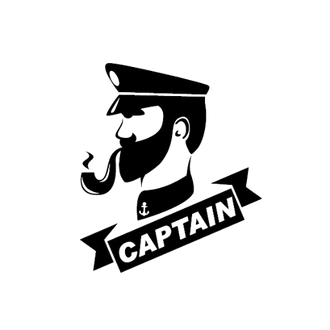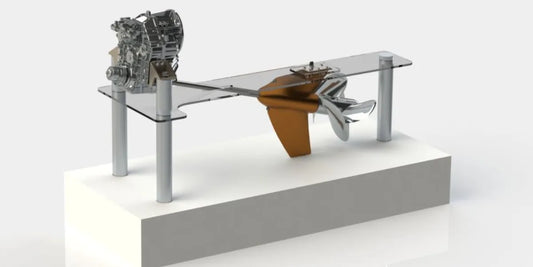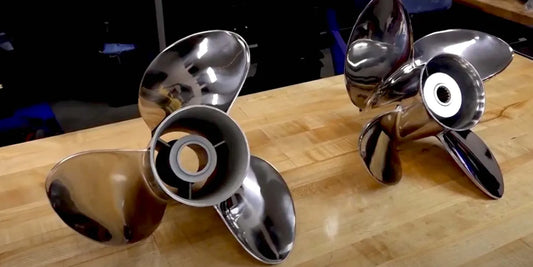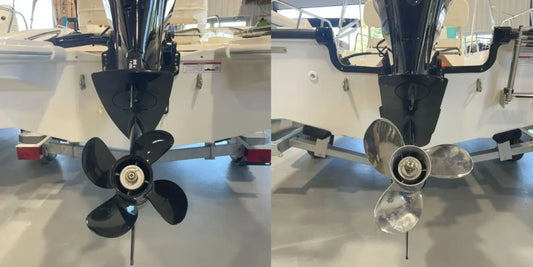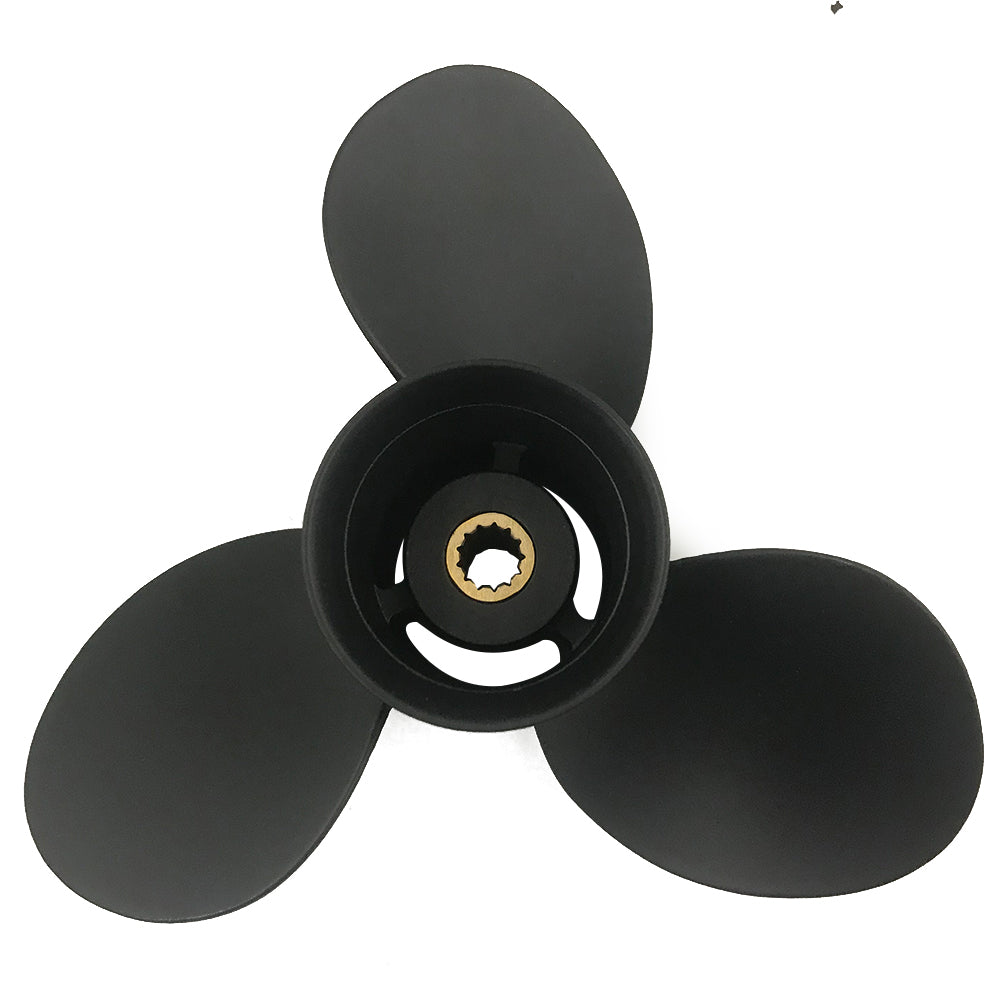Choosing the right propeller setup is certainly one of the most critical decisions affecting, if not influencing, your vessel's performance. If you are looking at the difference between propellers with 2, 3, and 4 blades, where the pitches are specified alike, a thorough look at the performance nuances is required to meet the operational objectives best. The analysis examines the technical differences, performance criteria, and practical considerations that would aid in your decision on the propeller to choose. The propeller stands as the first relative point between your engine power supply and water displacement, so its design determines almost entirely the overall performance of the vessel. While there might be a pitch specification standard to designs of 3 and 4 blade propellers, the number of blades has a profound effect on acceleration characteristics, fuel consumption profiles, levels of vibration, and handling qualities of the vessel.
Understanding Propeller Basics

What Is a Propeller and Its Functions?
The underwater propeller operates as a motorized rotating-wing system acting against water acceleration to produce thrust under torque from the engine. The basic principle underlying this process is Bernoulli's theorem and Newton's third law: accelerating pressurized water aft produces forward thrust. In fact, each blade acts as an airfoil section, generating pressure differences that impel water rearwards, thereby moving the vessel forward.
The geometric nature of the propeller directly affects the efficiency of thrust generation and operational performance. Hence, the blade area, camber distribution, rake angle, and cup parameters combine to determine thrust characteristics under various operating conditions. Usually, modern propeller design relies on advanced hydrodynamic theory to generate thrust with minimal risk of cavitation and efficiency loss.
The composition of materials plays a key role in propeller performance and durability. Aluminum alloys can be used cost-effectively for recreational purposes, while stainless steel constructions require maximum strength and corrosion resistance for the high-end marine environments. New technologies entering the marketplace include state-of-the-art composites and specialized metal alloys for super applications where maximum efficiency and durability are paramount.
The Importance of Pitch of a Propeller
Pitch is a theoretical distance that measures how far a propeller would move in a given time during the rotation of one revolution, with the assumption of 100 percent efficiency and no slippage. Being the most fundamental parameter, it links directly to engine loading characteristics on one end and to a vessel's capacity to achieve speed on the other. Generally, the higher the pitch, the higher should be the top speed but the higher also the power that the engine needs for highest performance.
Pitch selection must consider engine torque characteristics and vessel displacement properties. Lower pitch causes engines to over-rev without a corresponding increase in vessel speed. If the pitch is too large, engines may never reach their optimal RPM range, thereby lowering efficiency and possibly imposing mechanical stresses. Correct pitch association places engines into RPM bands as per manufacturer's specifications while the maximum thrust output is realized.
This relationship between pitch and blade count becomes of utmost importance when contrasting propeller systems. Propellers with the same pitch specifications will exhibit different loading characteristics on the engine, due to differences in blade area and thrust distribution between 3-blade and 4-blade applications. Fundamentally, such a difference would pose problems and must be thoroughly examined when deciding on the blade-count alternatives.
Performance Comparison: 3 Blade vs 4 Blade Prop

Speed and Acceleration Factors
In their daily pragmatic testing, speed, acceleration, etc., have found that three-blade propellers achieve 2-4% higher top speeds than their four-blade alternatives with the same pitch specifications. This superiority exists due to lesser drag coefficients, hydrodynamic efficiency coming into play at hither operating speeds. This difference in speed increases with light high-speed craft on which propeller efficiency gain gets reinstated as velocity.
Acceleration phases-initial planning and low-speed maneuvering- are the forte of the four-blade propellers. The extra blade maintains a steady thrust during power application, reducing propeller slip on acceleration and increasing acceleration efficiency. Tests show 10-15% improved acceleration times to planing speeds for four-blade configurations on boats of appropriate type.
Medium-range performance characteristics exhibit wide variation across blade-count configurations. Three-blade propellers retain their advantages in cruising speed ranges, while four-blade configurations deliver superior performance under variable load conditions. Obviously, the selection must prioritize an operational speed range most frequently used in normal vessel operation.
Fuel Efficiency Considerations
Fuel consumption patterns show discernible differences between the propeller configurations of three- and four-blade configurations. Three blades usually deliver a 3-5% improvement in fuel efficiency during cruising, thanks to lower drag and better hydrodynamic efficiency. This advantage becomes particularly important during long runs at maximum speed because, in such cases, the propeller's efficiency directly affects fuel consumption.
Four-blade propellers may be more efficient during throttle changes and stop-start operations. Better acceleration behaviors shorten the time spent at inefficient partial-throttle positions-exactly enough to compensate for the inherent disadvantage during steady-state operations. This consideration must be made for commercial use.
Engine loading characteristics are one of those. Fuel efficiency estimates comparing both are thus influenced. Due to its high torque, the four-blade propeller allows the engine to run at an RPM range near peak efficiency, thereby compensating for any supposed hydrodynamic efficiency disadvantage considered. Therefore, any analysis of fuel consumption must be based on profiles of actual operations rather than on single performance metrics.
Handling and Maneuverability
Steering reaction characteristics differ considerably among blade-count configurations. Four-blade propellers are better than the other configurations to ensure more steering control at low speeds because they generate more consistent thrust and less propeller slip. This particular characteristic comes in handy when docking and tight maneuvering situations come into play, where the emphasis shifts entirely into precise control over lateral movements.
Three blades would instead have better handling properties at higher speeds due to less drag and less disturbed water flow pattern around the surface of the propeller disc. With fewer disruption-if fewer blades-the less the disturbance gets to dissipate, which otherwise, at high operational speeds, can be manifested in the reduction of effectiveness of the rudder as well as handling carry precision.
Reverse thrust generation varies significantly with different propeller configurations. Four-blade configurations usually offer better reverse-thrust characteristics due to greater blade area and more consistent engagement with the water during reverse operations. This consideration becomes paramount for the larger vessels to have improved backing power for docking and maneuvering operations.
Choosing the Right Propeller for Your Boat

Assessing Usage: Recreational vs. Competitive
In the recreational field, major design parameters considered are fuel efficiency, smooth-running, and application characteristics across varied operating conditions. The four-blade-type propeller is generally best suited for recreational users, because of its vibration characteristics, low-speed handling, and reasonably constant characteristics under varying load conditions. The marginal loss in top speed is something that one is willing to take, given the improved operating characteristics.
On the other hand, the competitive counterparts aim to maximize performance within given operational parameters. Three-blade propellers often are the better choice in racing where top speed and acceleration stand front and center as the chief performance criteria. That gain in operational efficiency and lower drag translates directly into working competitive performance in speed-based applications.
In commercial applications, propeller configurations need to be designed with durability, fuel consumption, and consistent performance under varying load conditions in mind. Four-blade designs will often provide better solutions because there are less stresses imposed on each blade, giving better acceleration characteristics and, ultimately, better reverse thrust. The commercial service usually justifies the extra expenditure for a four-blade configuration.
Matching Propeller to Boat Type
Four-blade propellers fit perfectly with displacement-hull craft, offering excellent performance in low-speed thrust and getting the job done at displacement-speed fuel efficiency. This additional blade area thrusts more at lower RPMs, typical of displaced operation, and less vibration is transferred to hull structures.
A careful analysis of operational priorities determines the correct blade count for a planing hull. Planing hulls with high-performance designs typically install three-blade configurations so that they achieve their full potential for speed. A four-blade one might present a better compromise for multi-purpose planing vessels, with versatility and handling features.
Semi-displacement hull types may achieve best results with four-blade propellers, as their characteristics are spread across both the displacement and semi-planing speed ranges. The thrust characteristics afforded by four-blade designs further complement the operational requirements, varied as they may be, of typical semi-displacement vessel designs.
Factors to Consider: Weight and Engine Power
Since the displacement of a ship greatly affects propeller choice, the heavier vessels may generally benefit from four blades because of low-end torque and good acceleration from rest. The additional blade area provides better thrust production under loading-vessel conditions.
It is very important that the power rating of the engine follows the criteria of blade number adequately to the power rating. Very large powers using four blades shall use such powers for getting the best utilization of the torque with vibrations kept down. Less power would be better with three blades giving enhanced efficiency.
The power-to-weight ratios may favor the selection of blade numbers. Ships that exhibit very high power-to-weight ratios are mostly perceived as being best served by three-blade propellers for autonomous speed potentials, while the four-blade configurations may be popular among relatively low power-weight applications as thrust generation may be most inefficient.
Installation and Maintenance Tips

Propeller Installation: Correct Procedures
To install a propeller correctly, it must be torqued as recommended by the manufacturer, considering all safety procedures. The propeller hub should be thoroughly cleaned and inspected before installation to confirm it is undamaged. Anti-seize compound treatment on threads and splines prevents galvanic corrosion and makes subsequent removal operations easier.
Torque values differ significantly between propeller and mounting-type designs. Manufacturer-recommended torque values must be applied to achieve the right amount of clamping force without risking excess force on the hub. Too little torque allows propeller movement causing potential damage to the hub, whereas too much torque can bring about cracking of the hub or damage to the threads.
Contrarily, propeller alignment verification guarantees peak performance and minimizes vibrations. Runout measurements should be controlled within manufacturer specifications to preempt the dynamic imbalance that stresses supporting structures. Professional installation services should be engaged for critical applications or costly propeller investments.
Maintenance for Increased Durability
The inspection of the admission protocols should include assessment of the condition of the blade edges and hub, and the integrity of the propeller. Prevention of marine growth and surface cleaning is the maintenance of good hydrodynamic characteristics, and is charted for inducing corrosion. Regular cleaning will be based on the operational environment and usage pattern.
Taking measures against galvanic corrosion involves installing and maintaining appropriate sacrificial anodes. Anode replacement schedules should ideally consider the vessel's water conditions and usage patterns. With the relative inadequacy of anode protection, propulsion systems would hardly last any longer, especially in saltwater environments.
Storage procedures can be the deciding factors in the propeller's longevity and performance. Cleaning, drying, and applying a protective coating can help save a propeller from corrosion during long-term storage. If temperature-controlled storage is provided, this would minimize thermal stress and consequent degradation of materials with time.
Signs of a Worn or Damaged Propeller
A worn and damaged propeller can exhibit reduced acceleration and top speed, increased vibration, and higher fuel consumption. These signs sometimes develop gradually, making regular performance monitoring crucial for early diagnosis of propeller-related problems.
Visual inspection criteria include blade edge condition, surface integrity, and hub wear patterns. Cavitation damage sets in when pitted surfaces appear on the blades' faces. Impact cases, on the other hand, inflict nicks and gouges along blade edges. Hub wear will occur with enlarged spline interfaces or keyway damage.
Vibrational characteristics, hence, served as indicators of early warning for propeller problems. Rising vibration levels across distinct RPM bands would mostly indicate a dynamic imbalance caused by damage or dirt accumulation. A professional balancing job restores smooth operation for any propeller that can be salvaged.
Expert Opinions and Recommendations

What the Boaties Are Saying
The marine trade has always insisted on fine-tailored propeller selection to the specific application requirements rather than offering generic recommendations. Experienced boaties also claim that when the actual configuration of any propeller corresponds with the kind of operation to be performed and the characteristic of the vessel, it brings out the optimum performance.
Feedback from the racing community describes the three-blade propellers as favored for top-speed applications, while the cruising community favors four-blade propellers for greater comfort and versatility. Commercial operators prefer four-blade designs for force of durability and operational flexibility.
Professional marine mechanics insist on testing the performance differences between any two options for selection of the correct prop. In reality, performance may vary significantly from theoretical conclusions, and hence must be tested to make the right choice.
Industry Insights on Propeller Selection
Propeller manufacturers continue to develop materials and advanced design technologies to improve the performance of three- and four-blade configurations. With the help of computational fluid dynamics modeling, blade design optimization is becoming more and more sophisticated for specific applications.
Marine engine manufacturers give propeller selection recommendations based on engine characteristics and applications. These recommendations provide a good basis for propeller selection, which may need to be modified for the vessel and operational requirements.
The industry testing standards are still evolving to give more comprehensive criteria for evaluating performances. The advanced protocols for testing now conciliate vibration analysis, cavitation assessment, and long-term durability evaluation to enable making informed decisions about propeller selection.
Reference Sources
- 3 Blade vs. 4 Blade Propeller - Michigan Wheel
- 3-Blade vs. 4-Blade Propeller: What Are The Differences? - Reel Coquina Fishing
- 3 or 4 blade prop - Boat Talk - Ball of Spray
- Topic: 3 Blade vs 4 blade props - BassCat Forum
- 2-, 3- or 4-blade folding propeller – What to Choose for Your Sailboat - Flexofold Blog
Frequently Asked Questions (FAQs)
What are the advantages of a three-blade versus a four-blade propeller?
The three-blade propeller has a higher top speed than the four-blade prop, due to its lower drag. With fewer blades, rpms can be dependent on lighter hull designs or smaller boats. Also, three-bladed props generally have better efficiency at rpm at WOT, good for performance-type setups. However, it can have a disadvantage for hole shot for the heavier boats which require extra blade area to get on plane quickly.
Does a four-blade prop perform better in rough water conditions?
A 4-blade prop can do wonders for rough-water performance by imparting greater stability and control. Providing that extra grip on water, the propeller minimizes cavitation and thus enhances thrust levels. Of course, this feature is particularly useful for larger boats or those with powerful motors traversing choppy conditions smoothly. The additional blade surface area helps achieve a good hole shot and get heavy boats on plane efficiently.
How does the diameter affect propeller performance between the 3- and 4-blade options?
The diameter of a propeller is critical in the criteria that bear on its performance. With a larger diameter, thrust is produced along with handling at low speed, which is of paramount importance for heavier boats, especially for the hole shot. With respect to 3-blade and a 4-blade prop, if the 4-blade prop can be made larger in diameter, it will result in better overall performance, especially in mid-range, yet at the same time, the advantage of better top speeds given by the smaller diameter 3-blade prop must be kept in mind.
Will switching to a 4-blade prop improve fuel economy compared to a 3-blade prop?
Changing from a 3-blade propeller to a 4-blade sometimes results in better fuel economy, especially if the 4-blade prop is designed to perform well at mid-range rpm. Improved acceleration and hole shot from the additional blade enable higher cruising speeds and lower fuel consumption. But it all depends on the hull configuration and motor setup. For some setups, the extra drag from that fourth blade can negate any efficiency gains, so configurations need to be tested to find the one that works best for your application.
How does pitch affect the performance of 3-blade and 4-blade props?
Propeller pitch dramatically affects a propeller's performance, including speed and acceleration. Higher pitch speeds are likely achievable but may hamper initial acceleration, needed to get the plane-on time with heavier boats. At an equal pitch, a 4-blade prop will feather a better hole shot than the 3-blade because of the extra blade area. Yet, if the pitch is too high for the motor in terms of horsepower, the impeller can suffer RPMs and hence the performance; therefore, it's pretty critical to match the pitch with the motor's capability.
So do 3-blade and 4-blade props differ much in top speed?
Indeed, there is a big difference between top speeds of 3-blade versus 4-blade props. 3-blade props generally tend to go faster, as they offer less drag and allow more rpm to be developed. The hull, motor power, and entire rig setup would affect the performance of either blades. A properly-fitted 4-blade prop, however, can yield equal top speed results, conceding superior efficiency on the mid-range and in handling in rough waters. Therefore, depending on really the kind of waters you will be on and how you will use your boat, the final determination might be theirs.
